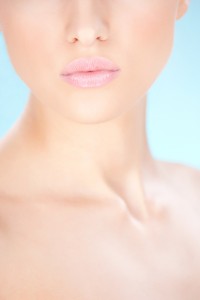 Pound for pound, botulinum toxin is the most potent toxin known to man. It is a neurotoxin and paralytic agent that prevents nerves from transmitting signals to muscles. Perhaps this is why the FDA has been rather slow in approving different botulinum toxin for cosmetic purposes. Regardless of the reasons for the delay, Botox now has a competitor called Dysport. Despite being approved in 2009, many industry experts doubt that the new kid on the block will ever catch up.
Pound for pound, botulinum toxin is the most potent toxin known to man. It is a neurotoxin and paralytic agent that prevents nerves from transmitting signals to muscles. Perhaps this is why the FDA has been rather slow in approving different botulinum toxin for cosmetic purposes. Regardless of the reasons for the delay, Botox now has a competitor called Dysport. Despite being approved in 2009, many industry experts doubt that the new kid on the block will ever catch up.
Besides coming late to the party, Dysport has had to overcome the nearly unparalleled name recognition of Botox. Patients come to the dermatologist or plastic surgeon specifically asking for Botox when they want their wrinkles treated; like asking for a Kleenex when really wanting a tissue or Googling something regardless of the search engine. Few people, if any, come in to the office and request botulinum toxin type A-1 treatment. It seems that few are not specifically asking for Dysport just yet, either.
Another potential roadblock for Dysport is that the two botulinum toxins have a pretty similar effect. Not surprisingly, most head-to-head clinical trials have compared the two injections for their ability to treat medical problems such as cervical dystonia (neck muscles that are constantly contracted) or facial pain. Interestingly, in those studies, Dysport usually edges out Botox. Cosmetic comparisons between Botox and Dysport, on the other hand, are lacking.
While Dysport has been used in countries outside of the United States for years, doctors are still fidgeting with the optimum dose of Dysport for wrinkle-releasing actions. A unit of Botox is not the same as a unit of Dysport. When administered by some doctors, this question about dosing (or lack of experience compared to Botox) is keeping Dysport from performing its best. High doses are more likely to cause complications while low doses make Dysport seem less effective than Botox.
From a consumer’s standpoint, the introduction of Dysport to the market is a very good thing. The fact that there are no glaring differences between the two toxins is actually beneficial as well. Competition should keep the cost of Dysport fairly low and bring the cost of Botox down. The similarity between the two products allows doctors to substitute Dysport for Botox fairly easily. Since the makers of Dysport are providing incentives to for people to make the switch, if you are willing to try the newer botulinum toxin, you may save a bit of money for essentially the same treatment.
